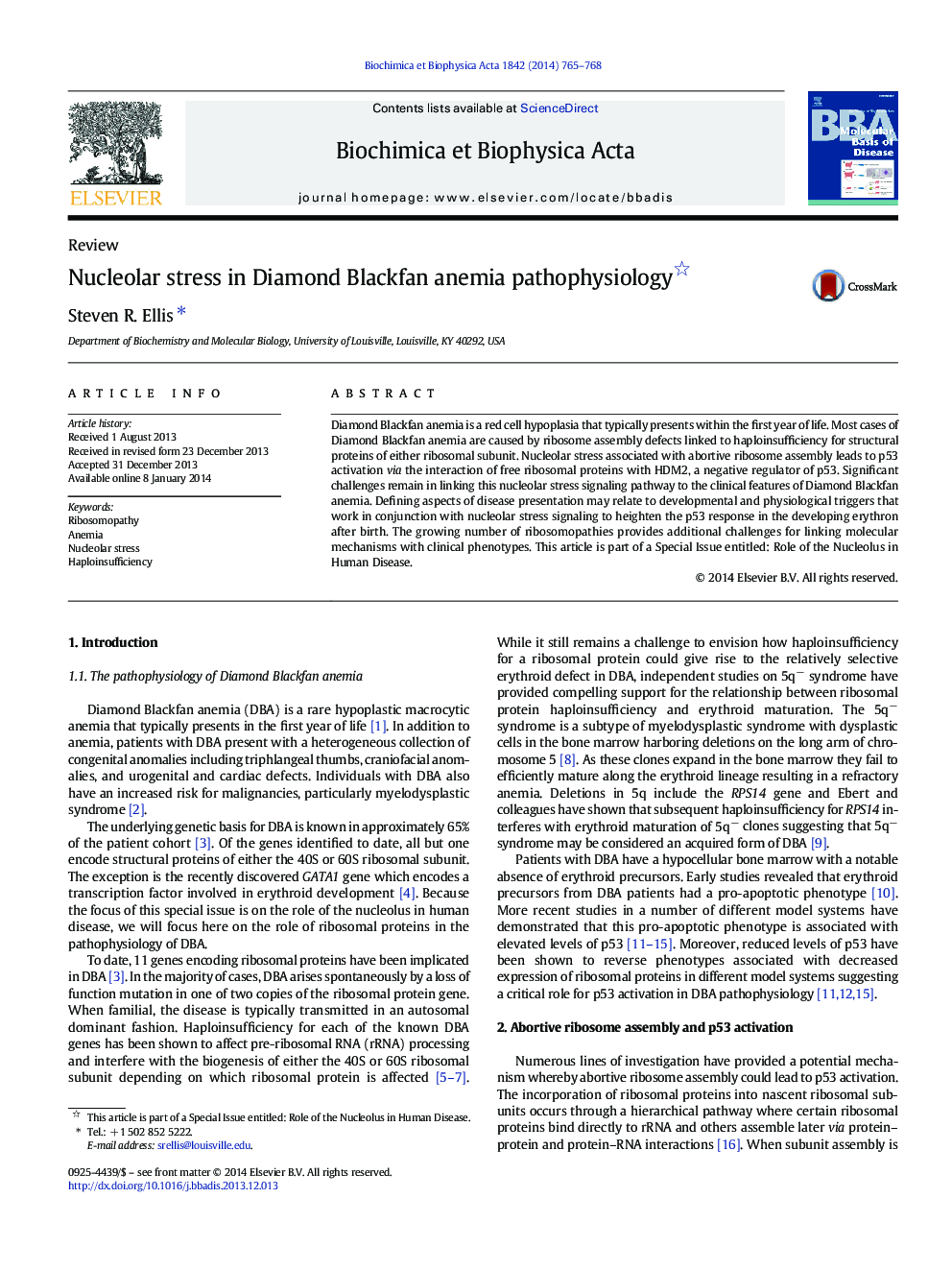| Article ID | Journal | Published Year | Pages | File Type |
|---|---|---|---|---|
| 1904761 | Biochimica et Biophysica Acta (BBA) - Molecular Basis of Disease | 2014 | 4 Pages |
•Most DBA genes encode structural proteins of the 40S or 60S ribosomal subunit.•Haploinsufficiency for ribosomal proteins interferes with ribosome assembly.•Re-directed ribosomal proteins inhibit HDM2 leading to p53 activation.•Congenital, developmental and physiological factors affect p53 activation in DBA.
Diamond Blackfan anemia is a red cell hypoplasia that typically presents within the first year of life. Most cases of Diamond Blackfan anemia are caused by ribosome assembly defects linked to haploinsufficiency for structural proteins of either ribosomal subunit. Nucleolar stress associated with abortive ribosome assembly leads to p53 activation via the interaction of free ribosomal proteins with HDM2, a negative regulator of p53. Significant challenges remain in linking this nucleolar stress signaling pathway to the clinical features of Diamond Blackfan anemia. Defining aspects of disease presentation may relate to developmental and physiological triggers that work in conjunction with nucleolar stress signaling to heighten the p53 response in the developing erythron after birth. The growing number of ribosomopathies provides additional challenges for linking molecular mechanisms with clinical phenotypes. This article is part of a Special Issue entitled: Role of the Nucleolus in Human Disease.
